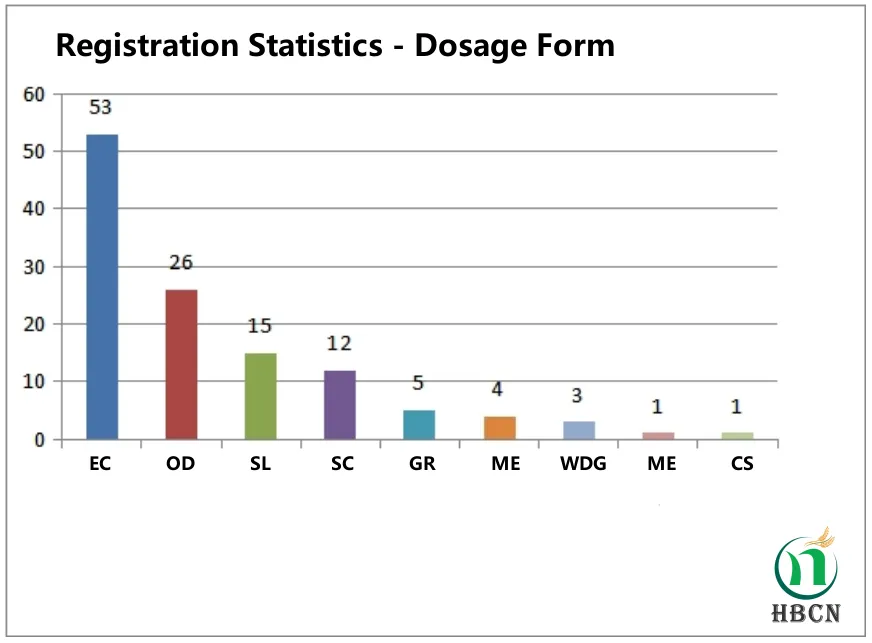
Nov . 17, 2024 15:24 Back to list
chlorpyrifos 50% products
Understanding Chlorpyrifos A 50% Active Ingredient in Pesticide Products
Chlorpyrifos, a widely recognized organophosphate pesticide, has been a cornerstone in agricultural practices for decades. Initially registered for use in the United States in 1965, it has played a vital role in pest control across various crops, including fruits, vegetables, and nuts. The formulation that contains 50% active ingredient chlorpyrifos is particularly popular among farmers due to its effectiveness in controlling a broad spectrum of pests.
Mechanism of Action
Chlorpyrifos works by inhibiting the enzyme acetylcholinesterase (AChE), which is crucial for the proper functioning of the nervous system in insects. AChE breaks down the neurotransmitter acetylcholine, allowing nerve signals to stop. When chlorpyrifos is introduced, it binds to AChE, leading to an excessive accumulation of acetylcholine. This accumulation causes continuous nerve signal transmission, resulting in paralysis and death of the targeted pests.
Usage and Application
The application of chlorpyrifos products containing 50% chlorpyrifos can be advantageous for farmers seeking to maximize their yields by effectively controlling pests that threaten crops. These products are typically applied as a foliar spray or through soil treatment, depending on the specific pest pressures and the type of crops being cultivated.
Farmers appreciate the effectiveness of chlorpyrifos against various pests, including aphids, caterpillars, beetles, and termites. Because of its residual activity, chlorpyrifos can provide extended protection to crops, allowing farmers to achieve higher productivity over a growing season without the constant need for reapplication.
Environmental and Health Concerns
chlorpyrifos 50% products

Despite its efficacy, chlorpyrifos has faced increasing scrutiny due to health and environmental concerns. Research has linked exposure to chlorpyrifos with a range of health issues, particularly developmental problems in children. Studies have indicated that residues can linger in the environment and bioaccumulate, affecting non-target organisms, including beneficial insects, birds, and aquatic life.
In light of these concerns, regulatory agencies, including the U.S. Environmental Protection Agency (EPA), have taken steps to assess and limit the use of chlorpyrifos. While the product has not been banned outright in all areas, specific uses have been restricted, and many consumers and advocacy groups are pushing for a complete ban.
Alternatives to Chlorpyrifos
With mounting pressure against chlorpyrifos, there has been a push toward finding alternative pest control solutions. Integrated Pest Management (IPM) practices incorporate a combination of biological control, cultural practices, and the use of less harmful chemical alternatives to reduce reliance on traditional pesticides like chlorpyrifos. Many farmers are exploring organic methods and products that utilize natural predators or biopesticides to manage pest populations effectively.
Innovations in biotechnology have also led to the development of pest-resistant crop varieties, which can significantly reduce the need for chemical applications. These advancements not only help in maintaining crop yields but also contribute to sustainable farming practices that align with consumer preferences for environmentally responsible agricultural products.
Conclusion
The use of chlorpyrifos product formulations with a 50% active ingredient offers significant advantages for pest management in agriculture. However, the potential health and environmental risks associated with its use cannot be overlooked. Farmers, regulatory bodies, and consumers must work collaboratively to find sustainable solutions that ensure agricultural productivity while protecting public health and the environment. As research continues and alternatives emerge, the agricultural sector is poised for a transition that embraces safety and sustainability without compromising on crop yield.
-
Emamectin Benzoate: AI-Optimized Pest Control Solution
NewsAug.01,2025
-
Best Abamectin 95% | Top Pesticide for Crop Protection
NewsJul.31,2025
-
Insecticide Spirotetramat 11% + Thiacloprid 11% SC at Good Price
NewsJul.30,2025
-
Best Abamectin SDS - Premium Quality & Reliable Safety Data
NewsJul.29,2025
-
Agrochemicals Pesticides Solutions for Sustainable Farming
NewsJul.29,2025
-
High-Quality Tebuconazole Fungicide for Crop Protection at Best Price
NewsJul.29,2025
